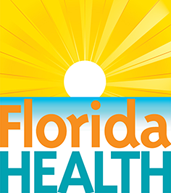It's a New Day in Public Health.
The Florida Department of Health works to protect, promote, and improve the health of all people in Florida through integrated state, county, and community efforts.
Breast Cancer
Contact the Florida Cancer Program
Breast cancer is a malignant tumor that begins in the breast and can invade surrounding tissues or spread to other areas of the body. Breast cancer is predominantly a disease among women and is the most common type of cancer among women in the U.S., however a small number of men also develop breast cancer.
Screening for breast cancer is typically done through diagnostic imaging, known as a mammogram, that uses a low-dose X-ray to show images of the breast tissue. The images are evaluated by a medical professional. If the mammogram shows an abnormal area of the breast, your health care provider may order additional tests.
Breast Cancer Screening Guidelines
Breast Cancer: Screening | United States Preventive Services Task Force
Women should know their breasts and report changes of size, shape, or skin appearance to their doctor. Symptoms that may indicate breast cancer are:
New lump or thickening in or near the breast or armpit
Thickening or swelling of part of the breast
Irritation or dimpling of breast skin
Redness or flaky skin in the nipple area or the breast
Any change in the size or shape of the breast
Pulling in of the nipple or pain in the nipple area
Nipple discharge (other than breast milk), including blood
Pain in any area of the breastorce line break in cascade
force line break in cascade
Breast Cancer Risk Factors
Your risk for breast cancer is due to a combination of factors. The main factors that influence risk include being a woman and getting older. It is important to note that some women will get breast cancer even without any other risk factors that they know of.
Examples of risk factors you cannot control:
Sex - Breast cancer is the most common cancer of women in the U.S.
Age - The risk for breast cancer increases with age.
Family History - Having a close family relative (such as a mother, sister, father, daughter, or son) who have had breast cancer.
Genetic Risk Factors - Women with genetic mutations in either the BRCA1 or BRCA2 gene changes increase risk of breast and ovarian cancer.
Previous Radiation - Women who have had radiation treatment to the chest area (as treatment for another cancer) earlier in life have a risk of getting breast cancer later in life.
Breast Density - A dense breast has less fat than glandular and connective tissue. Having dense breasts can sometimes make it hard to see tumors on the mammogram. Women with dense breasts are also more likely to get breast cancer.
Risk factors you can control:
Physical Activity - Women who are not physically active have a higher risk of getting breast cancer.
Healthy Weight - women who are overweight or have obesity after menopause have a higher risk of getting breast cancer than those at a healthy weight.
- Taking Hormones - Some forms of hormone replacement therapy (those that include both estrogen and progesterone) taken during menopause can raise the risk for breast cancer when taken for more than five years. Certain oral contreceptives (birth control pills) also have been found to raise breast cancer risk.
Reproductive History - Having your first child before age 30, not breastfeeding, and never having a full-term pregnancy can raise breast cancer risk.
Breastfeeding - breastfeeding lowers a woman's risk of getting breast cancer.
- Drinking Alcohol - Studies show that a woman's risk for breast cancer increases with the more alcohol she drinks. You can lower your risk for cancer by drinking less alcohol or not drinking at all.
Learn more about breast cancer and available resources at Florida Cancer Connect.



Connect with DOH